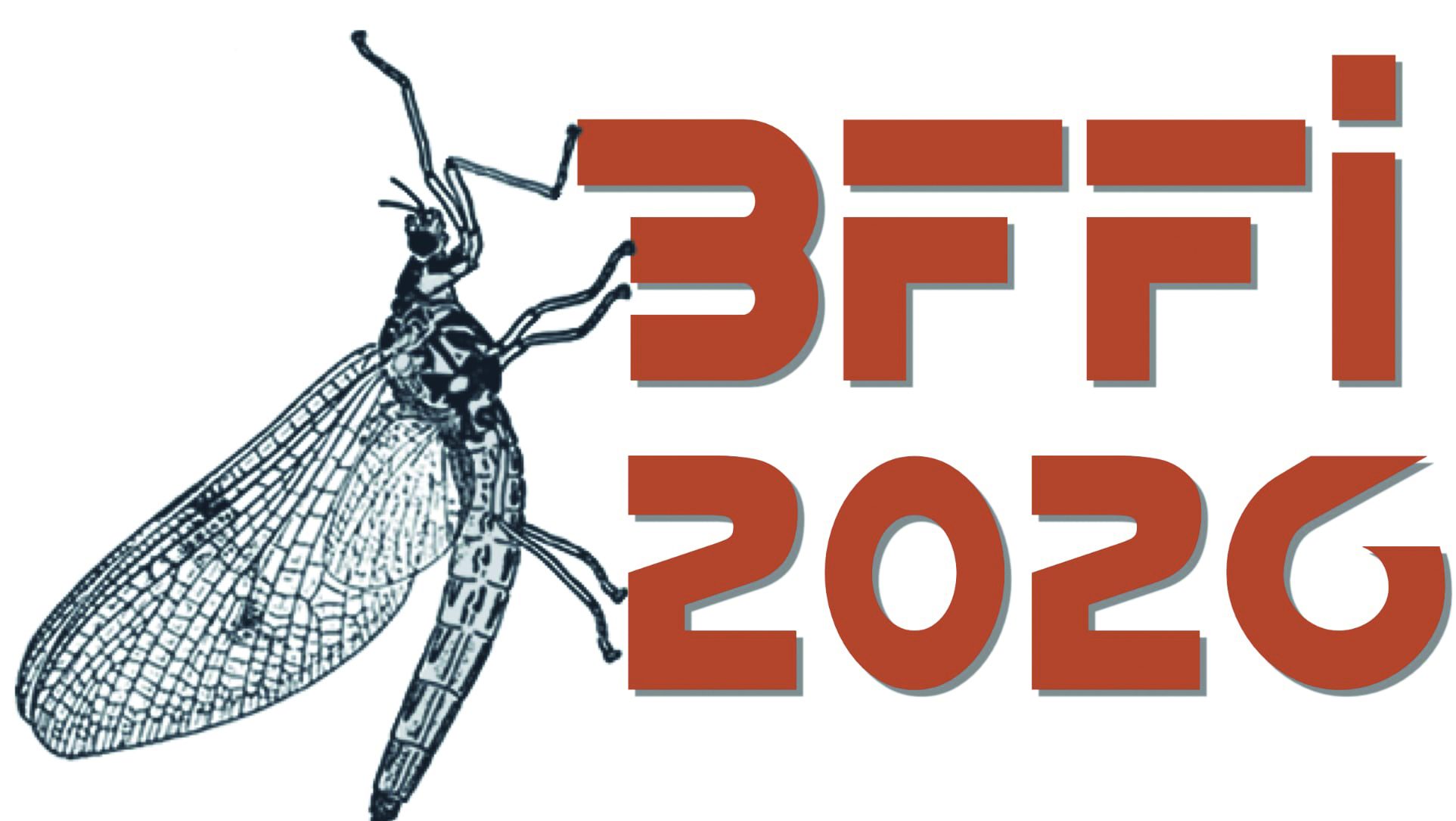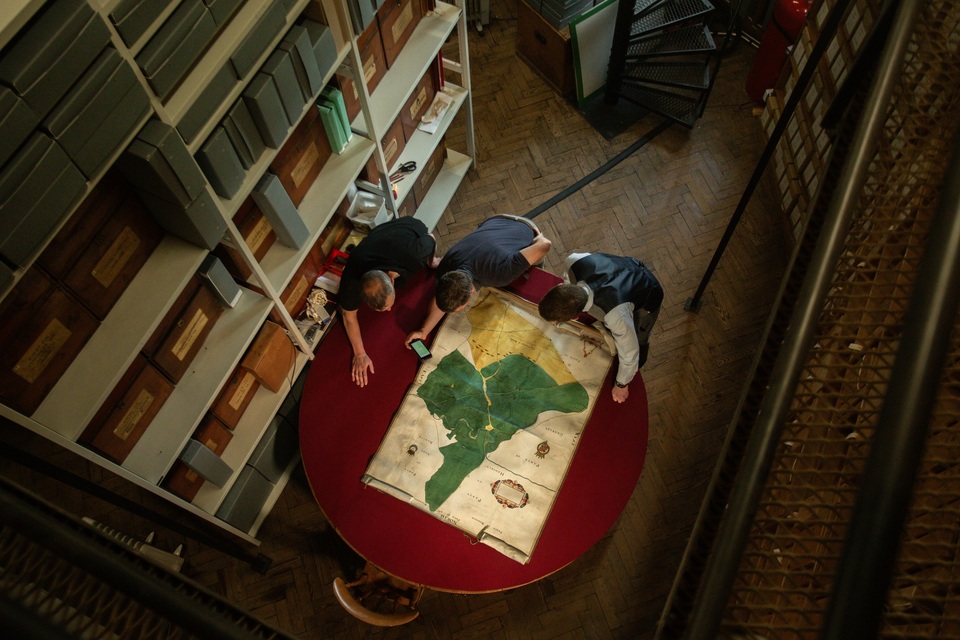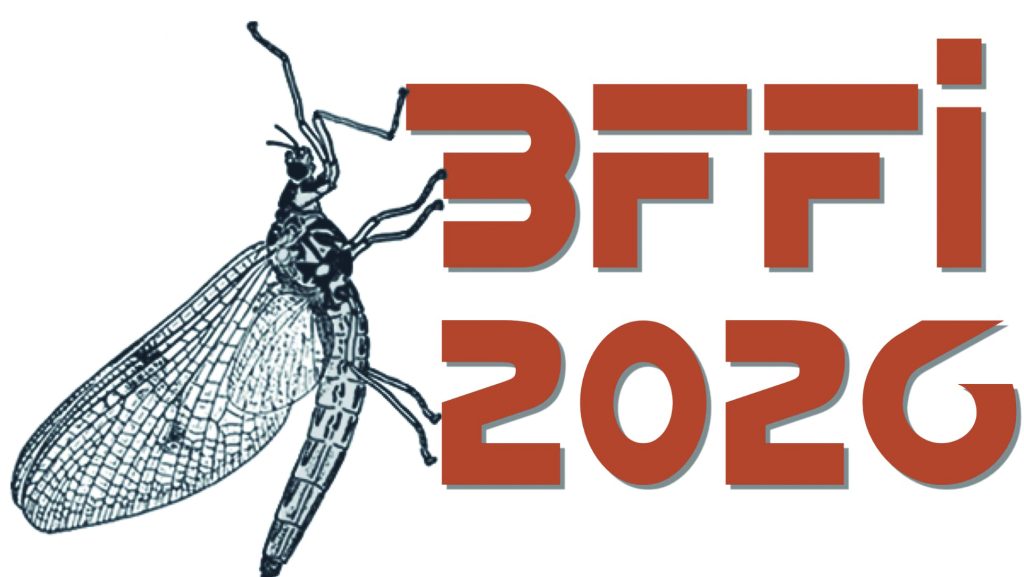HOW TO TIE THE PEARLY INVICTA MUDDLER
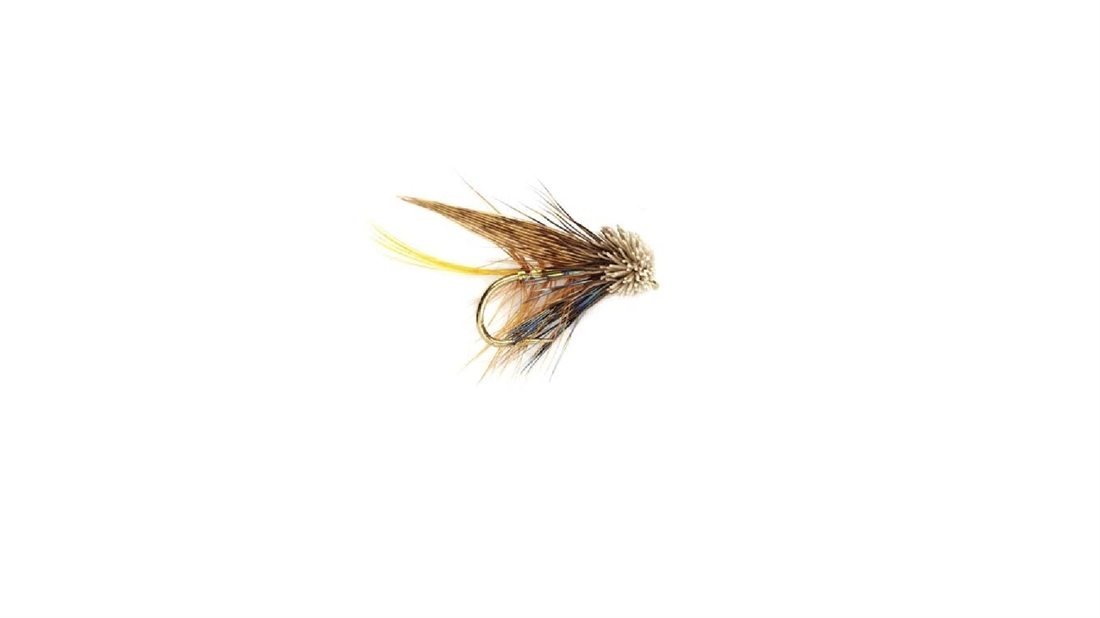
Trout are attracted to a fly with movement and never more so than when that fly creates a wake through the water’s surface. Today we have patterns such as Boobies and FABs, which rely on a chunk of plastic foam for their buoyancy. So ubiquitous have these foam flies become that it’s easy to forget that – once upon a time – we really only had deer hair to create a similar effect.
While deer hair is nowhere near as buoyant as foam, it does have an advantage in certain circumstances. For one, it creates a more natural-looking effect and – as it absorbs water – the fly can be skimmed along creating its wake right in the surface film. This is an important point when using the classic wet fly technique of dibbling the top dropper at the end of the retrieve, where a very buoyant fly can produce more swirls than positive takes.
HOOK: Size 8-12 wet fly
THREAD: Brown
TAIL: Golden pheasant crest
RIB: Fine silver wire
BODY: Medium pearl tinsel
BODY HACKLE: Brown cock hackle
THROAT HACKLE: Blue jay or dyed blue guinea fowl
WING: Hen pheasant centre tail or wing quill
HEAD: Roe deer hair
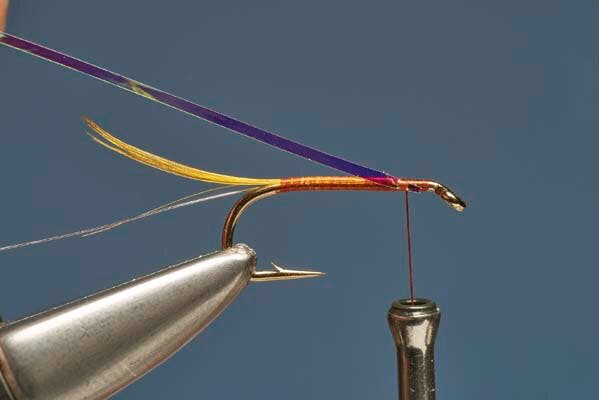
- At the bend catch in a golden pheasant crest and a length of silver wire then wind the thread back up the shank. Catch in a length of pearl tinsel.
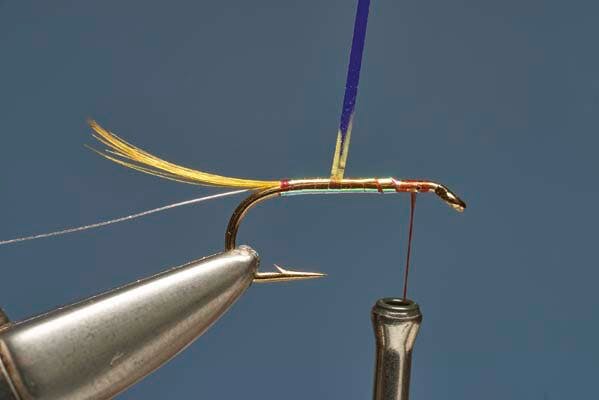
- Having formed an even layer with the tying thread wind the pearl tinsel down to the tail base and then back over itself to form a double layer.
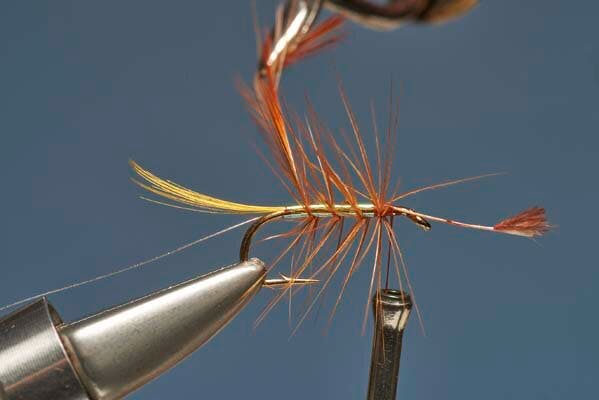
- Prepare a soft-fibred brown cock hackle and catch it in at the front of the body. Using hackle pliers wind the hackle down to the tail in open turns.
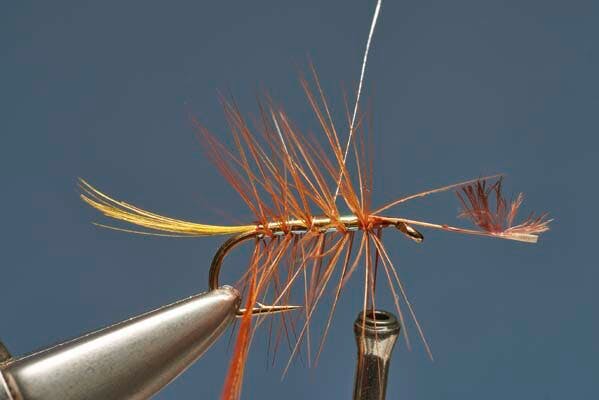
- Once the hackle has reached the base of the tail wind the silver wire over the body in evenly-spaced turns, locking the hackle turns firmly in place.
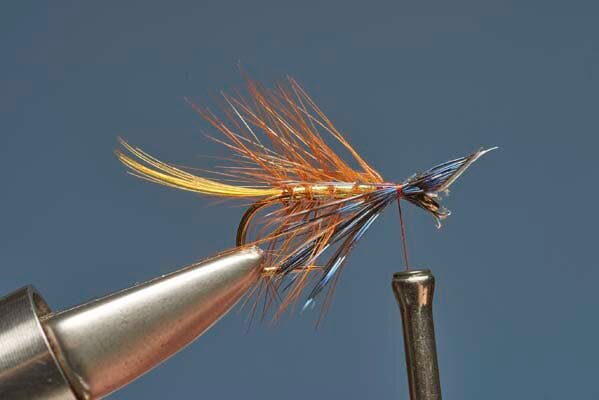
- Secure the end of the wire then trim it off along with the hackle tip and stem. Take a few fibres of blue jay and catch them in underneath the hook.
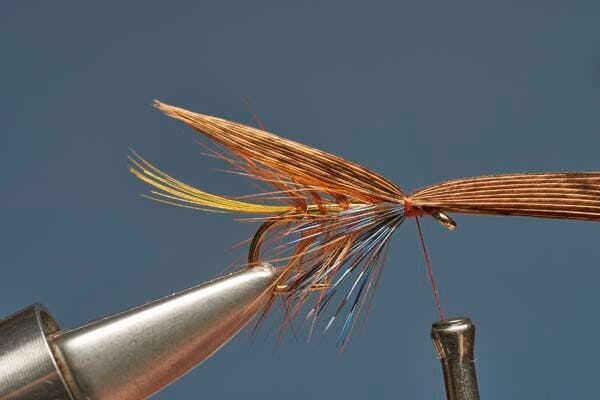
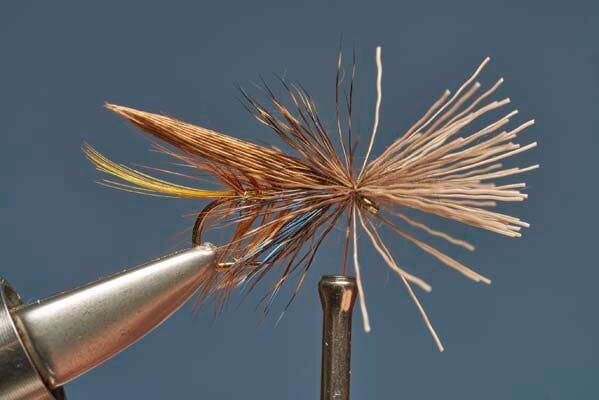
- Take a pinch of deer hair and catch it in so the tips project over the body. Tighten the thread so that the hair flares evenly around the hook.
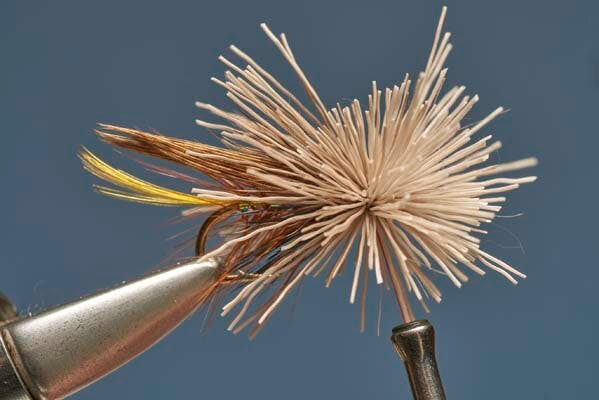
- Secure the hair with further thread turns adding a second larger bunch of deer hair. Tighten the thread so that the hair flares around the hook.
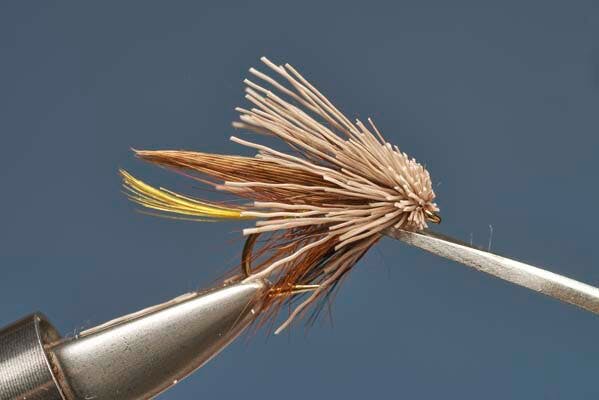
- Secure the hair with further thread turns, casting off the thread at the eye with a whip finish. Carefully trim the head to shape with small precise cuts.

